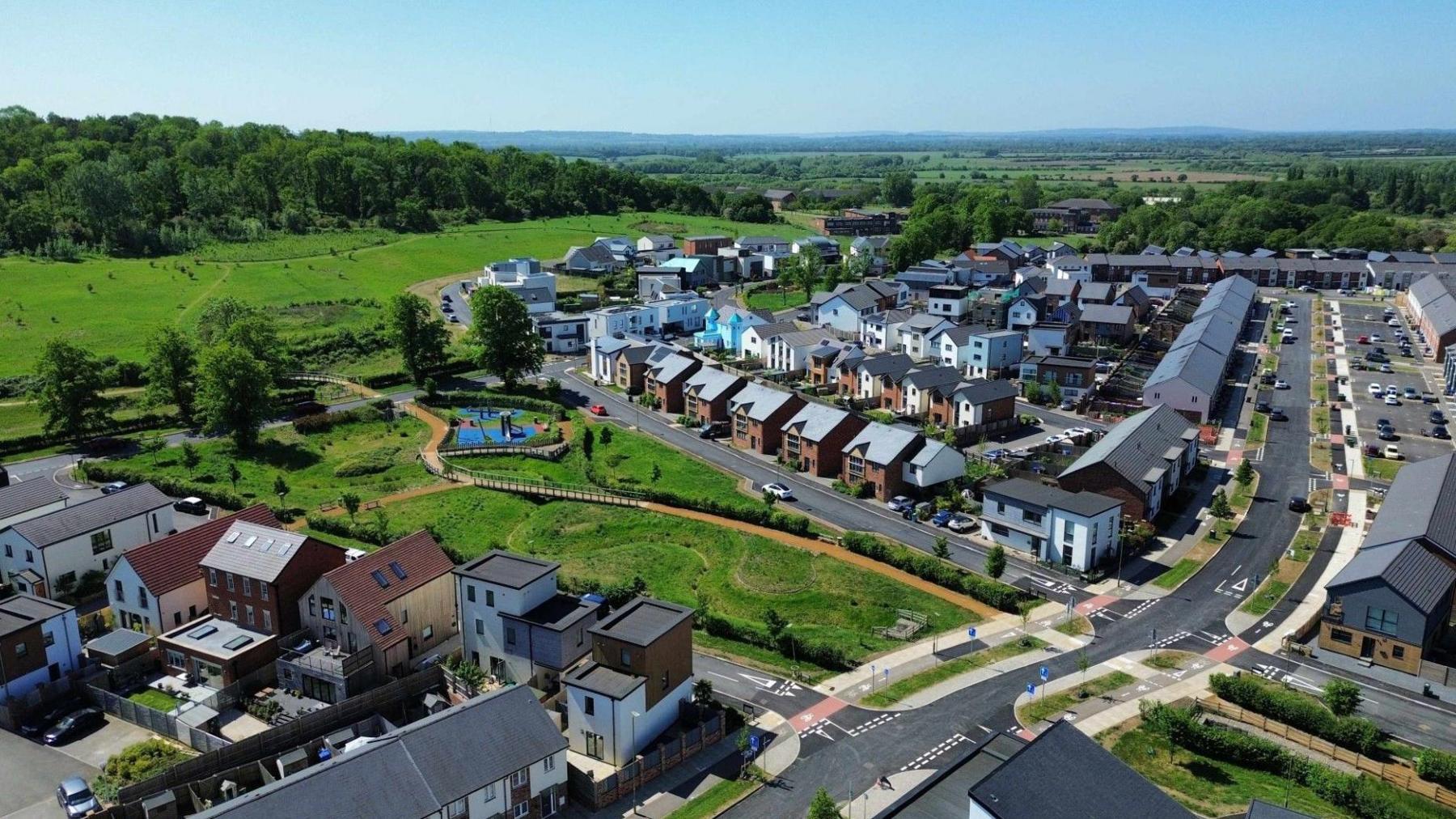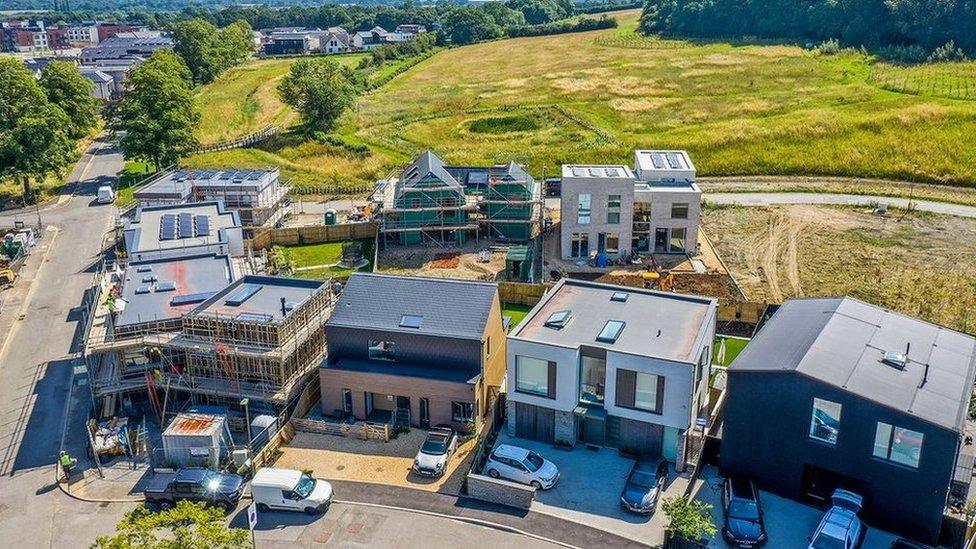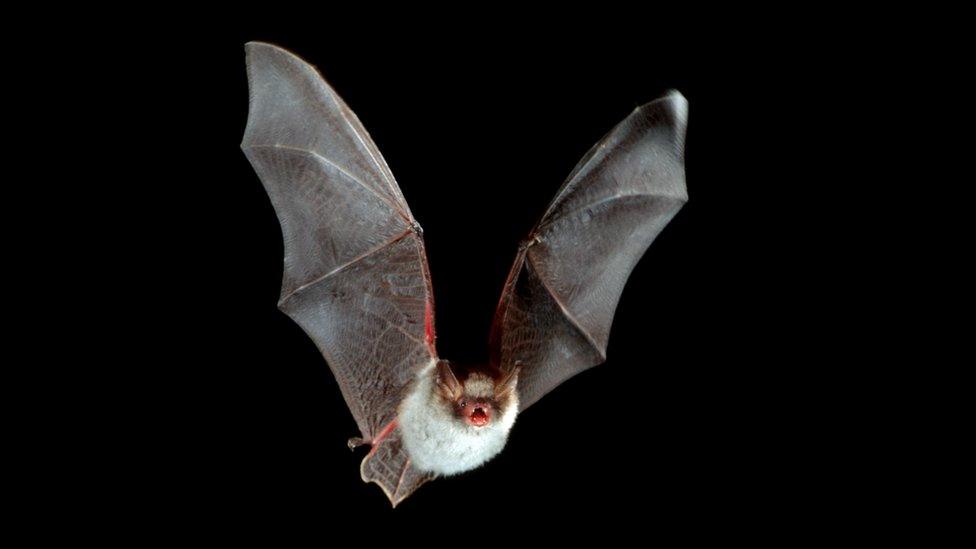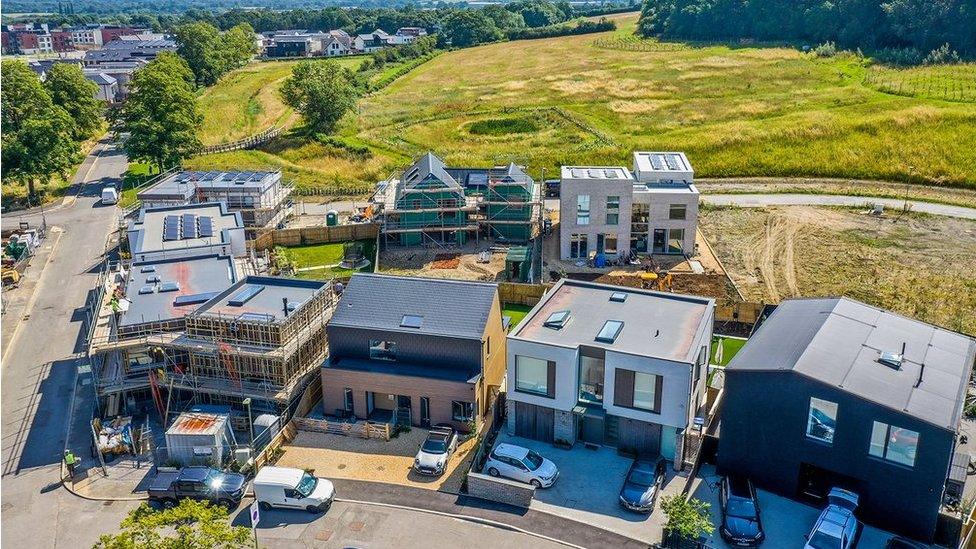Bat conservation success at self-build development

The development company's licence required it to create new roosts for the bats at the site
- Published
A scheme to protect bats roosting at the site of the UK's biggest self-build community has been hailed as a success.
A survey undertaken in 2015 as part of plans for the Graven Hill development in Bicester, Oxfordshire, found evidence of bat roosts in abandoned buildings and woodlands.
Graven Hill Village Development Company (GHVDC) had to apply to Natural England for permission to demolish buildings where the legally protected species were found, and take measures to safeguard the bats.
Ecologist Simon Dowell, who helped devise the plan, said: "It's great that we can provide for ecology alongside development."
Building first started at Graven Hill in 2016, with construction beginning after Cherwell District Council bought the former Ministry of Defence site.
About 650 homes have now been built, including self-builds, custom-builds, new builds, affordable housing, and apartments.
But GHVDC's licence required it to create new roosts for the bats at the location, continually monitor their population, and address any effects the phased development had on the species.
Community farm 'devastated' over £2k meat theft
- Published1 day ago
Police trial AI chatbot for non-emergency calls
- Published1 day ago
How will the Budget impact the south?
- Published1 day ago
The company installed 45 new bat boxes in 2021, placed strategically across Graven Hill and ranging in size, with the hibernation boxes able to hold hundreds of bats.
GHDVC said the boxes were "positioned to avoid areas of lighting and residential disturbance while still allowing local wildlife enthusiasts to enjoy seeing bats at dusk".
Eight active roosts were discovered last year, rising to 11 in 2025, and with further growth predicted in the coming years.

Building started at Graven Hill, near Bicester, in 2016
Mr Dowell, from Waterman Infrastructure & Environment, said: "There are 18 species in the UK and we have over half of the different species on site.
"The main ones roosting are the common pipistrelle, external, soprano pipistrelle, external, Natterer's bat, external, and the brown long-eared bats, external.
"We've got a new phase of the development coming in and we'll hopefully be putting more provision for roosting features around the site, so if we can bring in more of the species we've already got, plus some of the others… it'll be great."
Gemma Davis, customer experience director at GHVDC, said: "The bat project is a fantastic example of how thoughtful planning, ecological expertise, and community awareness can deliver lasting benefits."
Get in touch
Do you have a story BBC Oxfordshire should cover?
You can follow BBC Oxfordshire on Facebook, external, X (Twitter), external, or Instagram, external.
- Published27 October

- Published6 August

- Published2 May

- Published7 August 2024

- Published29 March 2024

- Published25 October 2023

- Published11 September 2023

- Published6 April 2023

- Published21 January 2023
